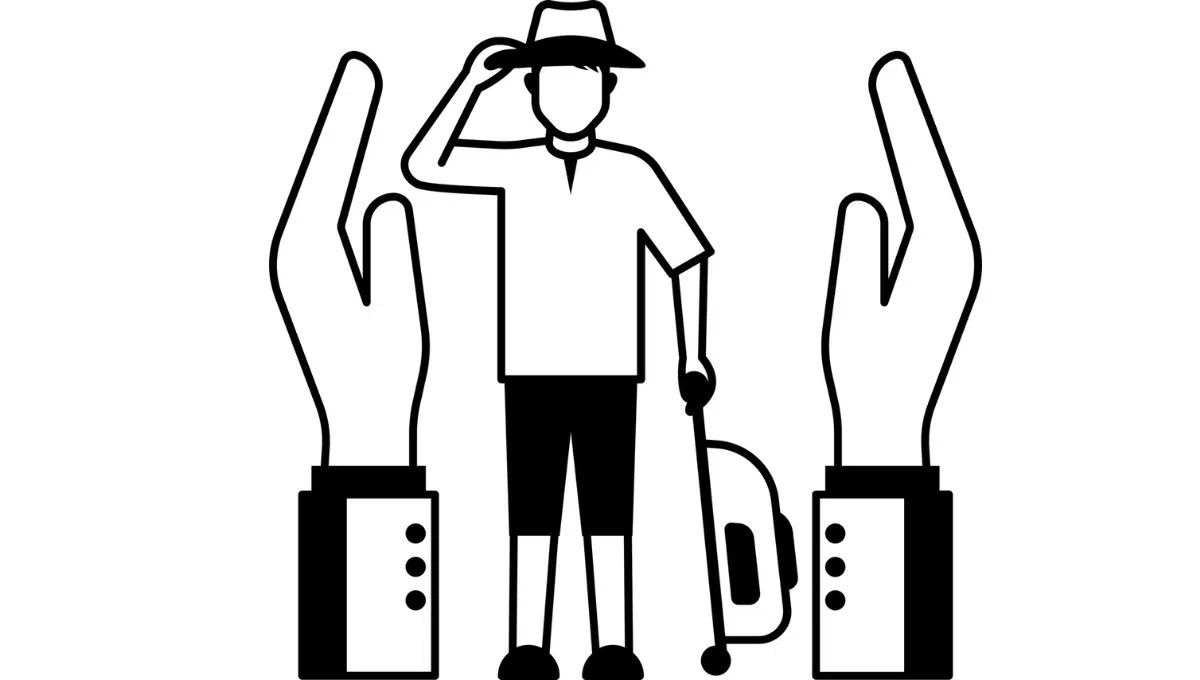Health insurance costs can strain budgets, prompting many to seek ways to reduce premiums without sacrificing coverage. One strategy gaining traction is bundling health insurance with other policies, such as dental, vision, or even non-health plans like auto or home insurance. This approach promises discounts and streamlined management, but is it a genuine money-saver or just a marketing tactic?
Bundling, often called a multi-policy or multi-line discount, involves purchasing multiple insurance policies from the same provider. Insurers incentivize this by offering reduced premiums, appealing to consumers who value convenience and cost efficiency. However, the specifics of bundling health insurance differ from traditional auto and home bundles, as health plans are typically regulated separately and offered by specialized providers.
Understanding whether bundling health insurance delivers real savings requires a deep dive into how it works, what policies can be combined, and the potential trade-offs.
What Is Insurance Bundling?
Insurance bundling refers to purchasing multiple policies from a single provider to qualify for discounts. While commonly associated with auto and home insurance, bundling can also apply to health-related plans, such as dental, vision, or supplemental coverage like critical illness insurance.
How Bundling Works
- Single Provider Advantage: Insurers offer discounts to encourage customer loyalty, reducing administrative costs and fostering long-term relationships.
- Types of Policies: Common bundles include health with dental, vision, or supplemental plans. Some insurers, like HCF in Australia, extend discounts to non-health policies like home or car insurance for members with health coverage.
- Discount Structure: Discounts typically range from 5% to 15%, though some providers offer up to 20% for specific combinations. The exact savings depend on the insurer, policies, and region.
Key Facts About Bundling
- Bundling does not merge policies into one; each policy remains separate with its own terms.
- Health insurance bundling is less common than auto-home bundles due to regulatory differences.
- Discounts may apply to one or all policies in the bundle, depending on the provider.
Key Facts and Findings
- Savings Potential: Bundling health-related plans can save 5% to 15%, with dental-vision bundles often offering the most consistent discounts.
- Common Combinations: Dental-vision, health-supplemental, and Medicare Advantage bundles are widely available, while health with non-health plans is less common.
- Convenience Factor: Single-provider billing and claims management save time and reduce administrative hassle.
- Regional Differences: Discounts vary significantly by location, with some areas offering minimal savings.
- Regulatory Impact: Health insurance regulations limit bundling options compared to auto or home insurance.
Can Health Insurance Be Bundled?
Health insurance bundling is possible but varies by provider and region. Unlike property and casualty insurance, health plans are often subject to stricter regulations, limiting which policies can be bundled and how discounts are applied.
Common Health Insurance Bundles
- Dental and Vision: Many insurers offer bundled dental and vision plans, which can save 5% to 10% compared to standalone policies. These plans often lack waiting periods or deductibles for preventive care.
- Supplemental Plans: Pairing health insurance with critical illness, accident, or hospital indemnity plans is common, especially for employer-sponsored coverage.
- Medicare Advantage: Some Medicare Advantage plans bundle health, dental, vision, and additional benefits like gym memberships or telehealth services.
Limitations of Health Insurance Bundling
- Restricted Providers: Health insurers typically do not offer auto or home insurance, limiting bundling options compared to property insurance.
- Regulatory Constraints: Health funds, especially in countries like Australia, face restrictions on discounting health insurance directly, so discounts may apply to non-health policies instead.
- Employer Plans: Many employer-sponsored health plans already include dental or vision coverage, reducing the need for separate bundling.
| Bundle Type | Potential Savings | Common Providers | Notes |
|---|---|---|---|
| Dental + Vision | 5%–10% | UnitedHealthcare, Cigna | Often no waiting periods for preventive care |
| Health + Supplemental | 5%–15% | Aetna, The Standard | Common in employer plans |
| Medicare Advantage | Varies | Humana, Blue Cross | May include extras like gym memberships |
| Health + Non-Health | Up to 15% | HCF, Nationwide | Limited to specific insurers |
Benefits of Bundling Health Insurance
Bundling health insurance offers several advantages, from cost savings to simplified management. These benefits appeal to consumers seeking value and convenience.
Cost Savings
- Premium Discounts: Bundling can reduce premiums by 5% to 15%, with some insurers like Nationwide offering up to 15% for combining health-related plans.
- Single Deductible: Some providers offer a combined deductible for bundled policies, reducing out-of-pocket costs during claims.
- Long-Term Value: Loyalty discounts may increase over time, enhancing savings for long-term policyholders.
Convenience and Management
- Streamlined Billing: One provider means one bill, simplifying payment tracking and reducing the risk of missed payments.
- Unified Claims Process: Filing claims with a single insurer is often faster and less complex than dealing with multiple providers.
- Centralized Access: Many insurers, like GEICO, allow policyholders to manage all policies through a single app or account.
Enhanced Coverage Options
- Comprehensive Plans: Bundled plans, especially Medicare Advantage, often include extras like telehealth or transportation to medical appointments.
- Customizable Policies: Each policy in a bundle can be tailored to individual needs, ensuring flexibility.
Potential Drawbacks of Bundling
While bundling offers clear benefits, it is not without challenges. Consumers must weigh these drawbacks to determine if bundling aligns with their needs.
Limited Provider Choices
- Restricted Options: Bundling with one insurer may limit access to specialized plans offered by competitors.
- Coverage Gaps: A bundled plan may not offer the best coverage for specific needs, such as high-risk conditions or unique dental requirements.
Variable Savings
- Inconsistent Discounts: Savings vary by insurer and region. For example, Allstate notes that California residents may save only 2% on home-auto bundles compared to 25% elsewhere.
- Higher Base Premiums: Some insurers with attractive bundling discounts may have higher base rates, negating savings.
Complexity in Comparison
- Shopping Challenges: Comparing bundled plans across providers is time-consuming and requires careful evaluation of coverage and costs.
- Risk of Overpaying: Without thorough research, consumers may overpay for bundled plans that do not suit their needs.
How to Maximize Savings When Bundling
To make the most of health insurance bundling, consumers should adopt a strategic approach. These tips ensure optimal savings and coverage.
Research and Compare
- Get Multiple Quotes: Obtain quotes from at least three insurers to compare bundled and standalone policies. Tools like Experian’s insurance comparison platform can streamline this process.
- Evaluate Coverage: Ensure bundled plans meet specific health needs, such as frequent dental visits or specialized vision care.
- Check Regional Variations: Discounts vary by state or country, so verify local offerings.
Leverage Additional Discounts
- Auto-Pay Discounts: Many insurers, like Progressive, offer extra savings for enrolling in automatic payments.
- Loyalty Bonuses: Some providers reward long-term customers with increasing discounts over time.
- Other Perks: Look for value-added benefits, such as free gym memberships or telehealth services, included in bundled plans.
Work with an Agent
- Expert Guidance: Licensed insurance agents can clarify bundling options and help tailor policies to individual needs.
- Negotiation: Agents may secure additional discounts or customize bundles for better value.
Review Annually
- Shop Around Yearly: Comparing plans annually ensures access to the best rates and coverage, as sign-up discounts can outweigh loyalty bonuses.
- Adjust Coverage: Update policies to reflect life changes, such as new health needs or homeownership, to maintain cost efficiency.
Closing Thoughts
Bundling health insurance with other plans offers a promising path to savings and convenience, but it demands careful consideration. The potential for 5% to 15% discounts, streamlined billing, and unified claims processes makes bundling appealing for many. However, the benefits hinge on choosing the right provider and ensuring coverage aligns with individual needs. Regulatory constraints and regional variations further complicate the decision, underscoring the importance of thorough research.
Consumers should approach bundling strategically, comparing quotes, leveraging additional discounts, and consulting agents to tailor plans. Annual reviews ensure policies remain cost-effective as needs evolve. While bundling can simplify insurance management and reduce costs, it is not a one-size-fits-all solution. By weighing benefits against limitations, consumers can make informed choices that balance savings with comprehensive coverage, securing peace of mind in an increasingly complex insurance landscape.
FAQs About Health Insurance Bundling
- What is health insurance bundling?
Health insurance bundling involves purchasing multiple policies, like dental or vision, from one provider to qualify for discounts. - Can health insurance be bundled with auto or home insurance?
Rarely, as most health insurers do not offer auto or home policies. Some providers, like HCF, offer discounts on non-health plans for health policyholders. - How much can bundling save on health insurance?
Savings typically range from 5% to 15%, depending on the insurer and policies bundled. - Are dental and vision bundles common?
Yes, dental-vision bundles are popular and often include no waiting periods for preventive care. - Do bundled plans have the same coverage as standalone plans?
Yes, each policy in a bundle retains its own coverage terms, which can be customized. - What are the risks of bundling health insurance?
Risks include limited provider choices, potential coverage gaps, and variable savings that may not justify bundling. - Can Medicare plans be bundled?
Medicare Advantage plans often bundle health, dental, vision, and extras like telehealth or gym memberships. - How can consumers compare bundled plans effectively?
Use comparison tools, consult agents, and evaluate coverage, discounts, and base premiums across multiple providers. - Do all insurers offer health insurance bundling discounts?
No, not all insurers provide bundling discounts, and offerings vary by region and policy type. - Is bundling worth it if coverage needs are complex?
Bundling may not suit complex needs if it limits access to specialized plans. Always prioritize coverage over discounts.







